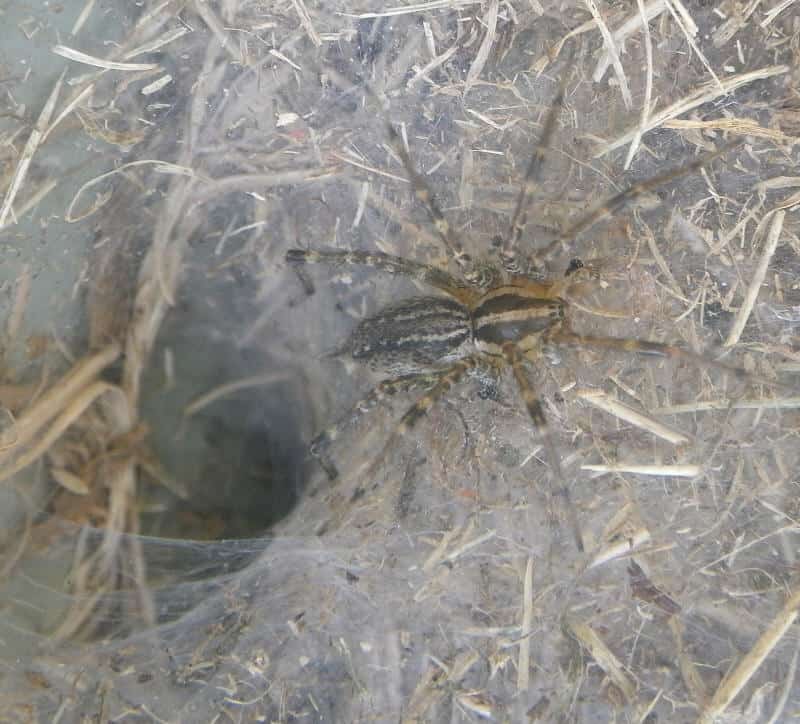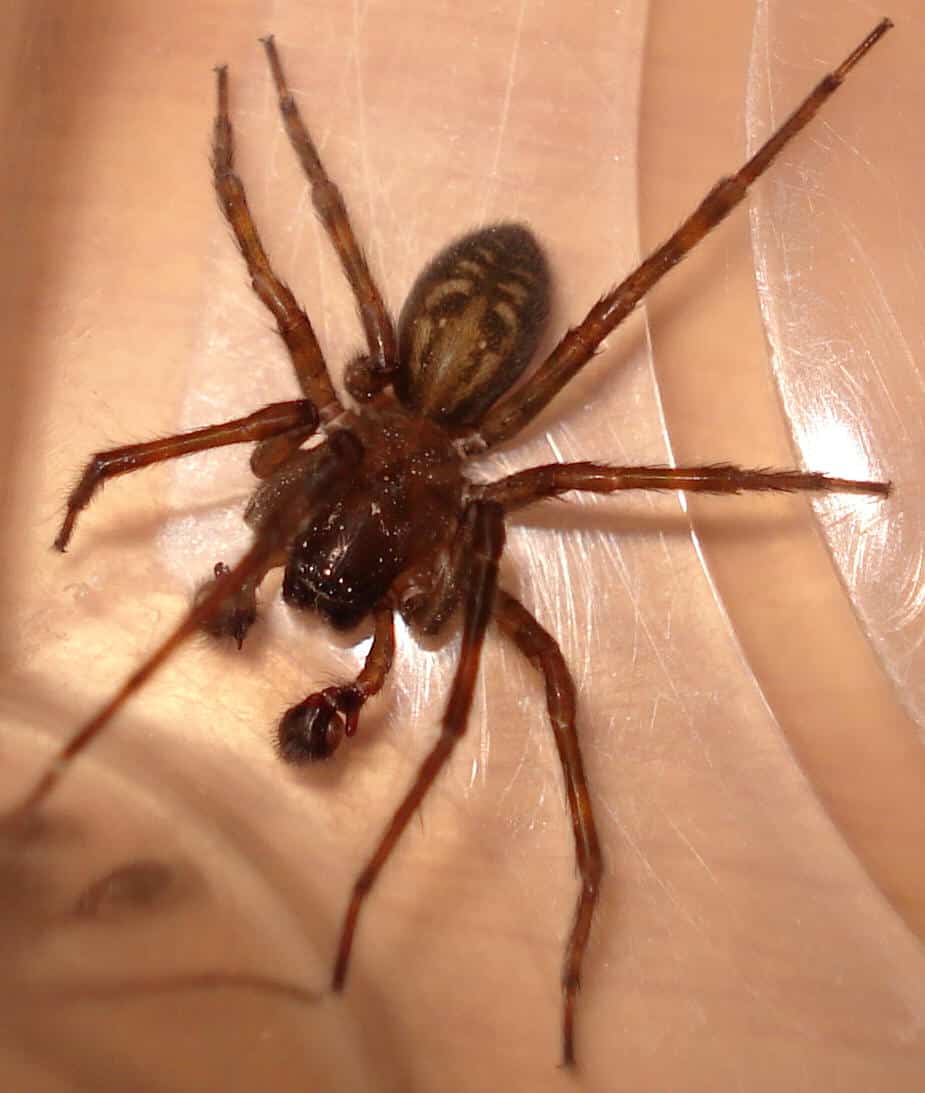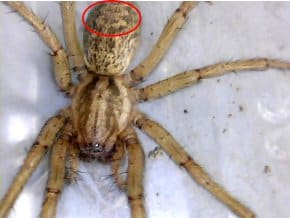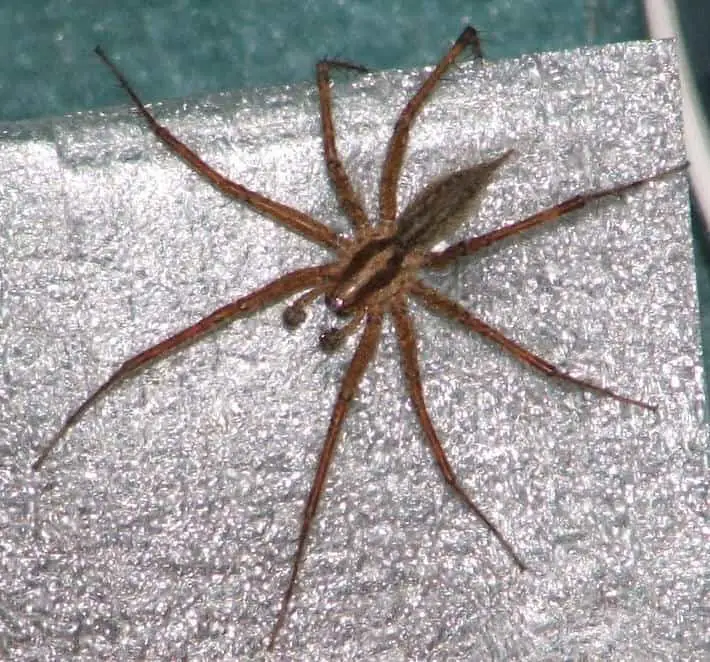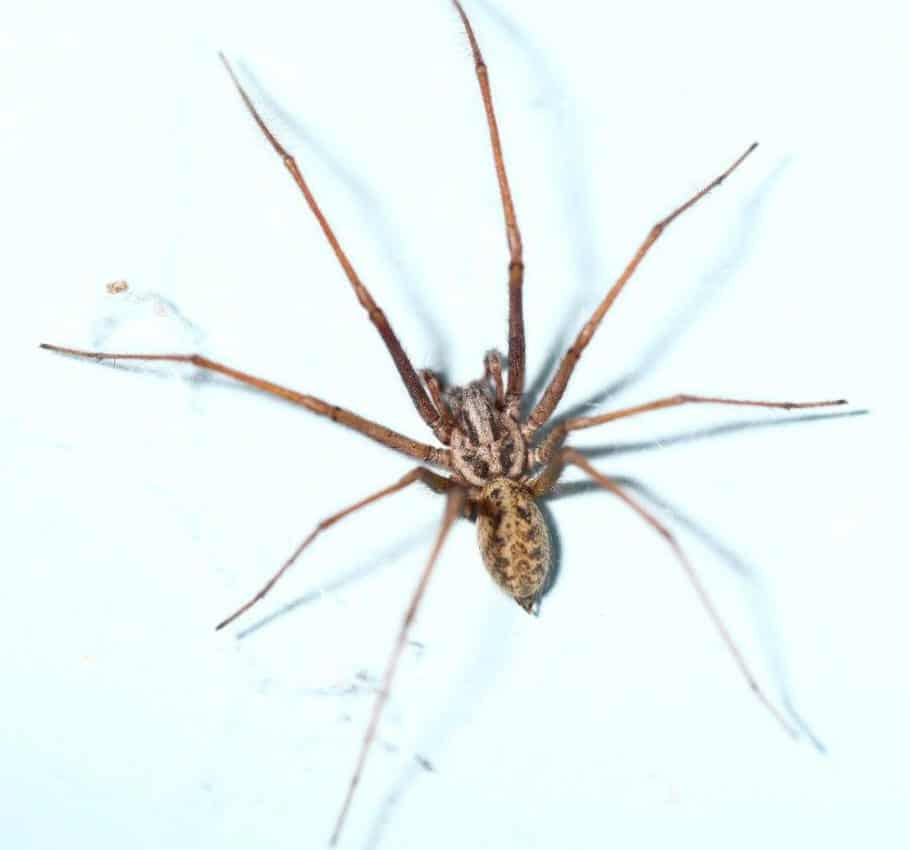Grass Spiders or Funnel weaver spiders (Agelenidae) as they are often called, closely resemble wolf spiders and the males sometimes resemble hobo spiders. They can usually be distinguished from wolf spiders because wolf spiders do not build webs. Funnel weavers are also usually lighter in build than wolf spiders. Many common funnel weaver are also characterized […]
Hobo Spider – Eratigena agrestis
These spiders belong to the Eratigena family of spiders. The adult Hobo spider is a moderately large (12-18 mm body length) brown spider, with long, unmarked legs (legs included, a typical specimen would fit nicely on a silver dollar). The dorsal abdomen exhibits a “herringbone” or multiple chevron pattern, which may be quite obscure in darker individuals. […]
Barn Funnel Weaver
Disclaimer: Tegenaria are very hard to tell apart and I am not at all certain that all the IDs on the tegenaria pages are correct. I have done the best I can to try and classify them correctly but would be happy for anyone to tell me if they believe otherwise – glen The spider species Tegenaria domestica, commonly known […]
Hobo Spider – Eratigena agrestis
Disclaimer: Eratigena and Tegenaria are very hard to tell apart, and I am not at all certain that all the IDs on the tegenaria and eratigena pages are correct. I have done the best I can to try and classify them correctly but would be happy for anyone to tell me if they believe otherwise. Eratigena belongs to […]
Funnel Weaver
Funnel weaver spiders Agelenidae, closely resemble wolf spiders because they have the same stripe on their cephalothorax and abdomen. They can usually be distinguished from wolf spiders because wolf spiders do not build webs. Funnel weavers are also usually lighter in build than wolf spiders and have elongated spinnerets. Many common funnel weaver are also characterized by […]
Giant House Spider
Giant House Spider (Eratigena atrica). Tegenaria duellica/gigantea and T. saeva were synonymized with T. atrica and moved to the new genus Eratigena as of August, 2013. Eratigena is an anagram of the genus name Tegenaria (Bolzern et al. 2013). The specific epithet, atrica, is formed from atri- after the Latin noun for “atrium” with the addition of the -ica suffix meaning “belonging to” (often used when referring […]

